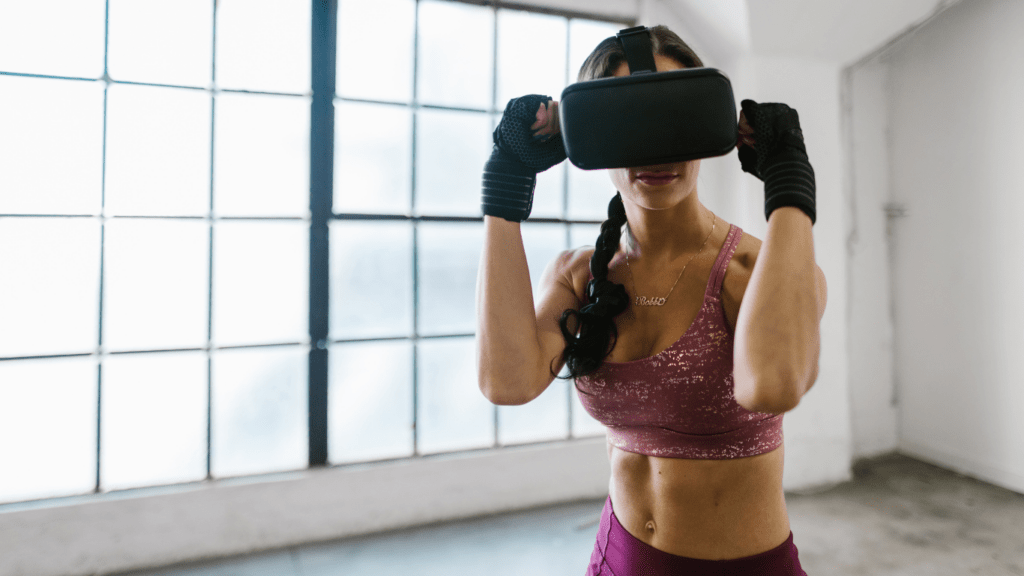The Rise of Smart Home Gyms
Smart home gyms have changed the way we approach fitness. Combining cutting-edge technology with workout equipment, these gyms offer unprecedented convenience.
Advanced systems integrate AI-driven personal trainers, real-time performance tracking, and virtual classes easily accessible through apps. For example, systems like Peloton and Mirror provide live workout sessions with real instructors. Peloton’s stationary bikes connect users to a community, fostering motivation and competition.
Interactive fitness platforms have gained popularity. They offer tailored workouts based on individual progress and goals. Systems like Tonal use AI to adjust resistance in strength training.
This ensures each session is effective while minimizing injury risk. Virtual personal trainers give instant feedback on form, enhancing overall workout quality.
Smart home gyms also emphasize connectivity. Equipment syncs with wearable devices and fitness apps for comprehensive health monitoring. Data such as heart rate, calories burned, and workout duration is tracked, enabling users to monitor improvements closely. Adding social features lets users share achievements, bringing a sense of community to home workouts.
The integration of virtual reality (VR) is another aspect reshaping home gyms. VR-based platforms immerse users in diverse environments, making workouts engaging. Applications like Supernatural VR transform cardio sessions into adventures, helping users maintain interest and consistency.
Clearly, smart home gyms offer advanced, connected, and engaging fitness solutions. These innovations cater to various fitness levels, pushing boundaries and making workouts more accessible and enjoyable.
Connected Fitness Equipment
Connected fitness equipment has revolutionized home workouts, offering a new level of engagement and effectiveness. With internet-connected devices, fitness enthusiasts can now access personalized training and real-time data.
Smart Treadmills and Bikes
Smart treadmills and bikes provide advanced features that enhance cardiovascular workouts. Devices, such as Peloton Bikes and NordicTrack treadmills, offer virtual classes streamed directly to the machine.
These classes feature live instructors and on-demand sessions. Built-in sensors monitor metrics like:
- heart rate
- speed
- distance
giving instant feedback to optimize performance. Integration with apps allows users to track achievements and set goals, making workouts more engaging.
Interactive Strength Machines
- Interactive strength machines like Tonal and Tempo have transformed resistance training.
- These devices use AI to analyze movements and adjust resistance levels automatically.
- Users receive real-time feedback on form, reducing the risk of injury and maximizing efficiency.
- Virtual coaches guide workouts, offering personalized training plans based on individual fitness levels.
- Connected features enable users to join live sessions or compete with friends, adding a social element to strength training.
- Integration with wearable devices also allows comprehensive progress tracking, further enhancing the workout experience.
Virtual and Augmented Reality Workouts
Virtual and augmented reality workouts are revolutionizing home fitness, offering immersive experiences that transform spaces into dynamic training environments.
Virtual Fitness Classes
Virtual fitness classes offer a wide range of sessions accessible at any time. Platforms like Peloton and iFit provide live and on-demand classes led by professional trainers.
Users can participate in spin, yoga, or HIIT classes from home. Interactive leaderboards allow users to compete with others, creating a sense of community. Features such as real-time feedback and personalized playlists enhance engagement. Some platforms integrate with wearables to monitor heart rates and calories burned.
VR Personal Training Sessions

VR personal training sessions take customization to new heights. Using headsets like Oculus Quest, users engage in immersive workouts that mimic real-life settings.
Programs like Supernatural VR offer guided routines in stunning virtual environments. Trainers provide live feedback and adjustments based on user performance. Customized workout plans adapt as users progress. VR sessions often incorporate gamified elements, making workouts more enjoyable. Integration with fitness trackers ensures comprehensive performance monitoring.
Wearable Fitness Technology
Wearable fitness technology has become essential in modern home gyms. Devices like smart watches and heart rate monitors provide real-time data and personalized insights.
Smart Watches and Fitness Trackers
Smart watches and fitness trackers analyze performance data during workouts. They count steps, monitor sleep patterns, track calories burned, and measure heart rate variability.
Popular devices include the Apple Watch, Fitbit Charge, and Garmin Forerunner. Features like GPS tracking and workout modes help tailor fitness routines. These devices sync with fitness apps, enabling comprehensive health monitoring. For instance, pairing an Apple Watch with the Fitness app provides detailed activity reports and custom workout plans.
Heart Rate Monitors
Heart rate monitors enhance workout precision by providing accurate heart rate data. This data helps optimize workout intensity, ensuring users stay within target heart rate zones. Chest strap monitors like the Polar H10 and wrist-based monitors like the Garmin Vivosmart are common choices.
These monitors sync with smart devices to offer real-time feedback and detailed analytics. This functionality supports effective fitness tracking and helps avoid overexertion. Users can adjust their routines based on heart rate data, achieving balanced and efficient workouts.
AI and Machine Learning
AI and machine learning are transforming home gyms. These technologies offer tailored experiences and instantaneous adjustments for optimal workouts.
Personalized Workout Plans
AI analyzes user data to create personalized workout plans. Platforms like Peloton and Tonal track performance and preferences to suggest routines. By learning individual patterns and progress, AI ensures workouts remain challenging yet achievable. This personalization enhances motivation and fitness results.
Real-time Feedback and Adjustments
Machine learning algorithms provide real-time feedback during exercises. Systems like Tempo and Tonal correct form and adjust resistance in real time, reducing injury risk. AI monitors movements and offers immediate recommendations. This dynamic adjustment maximizes workout effectiveness and safety.

